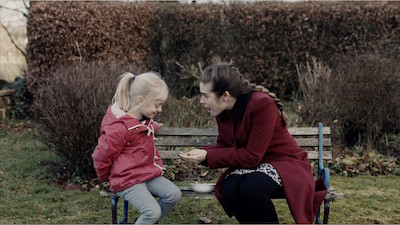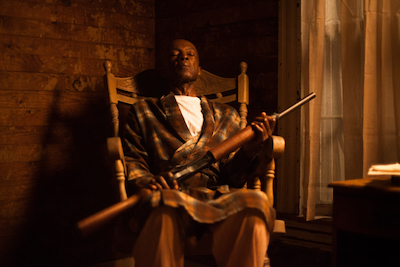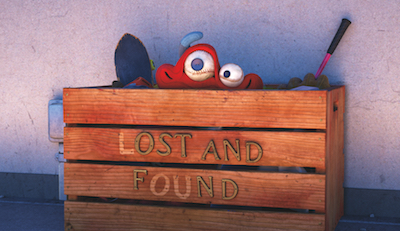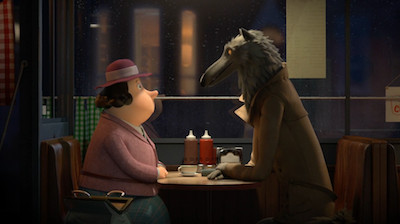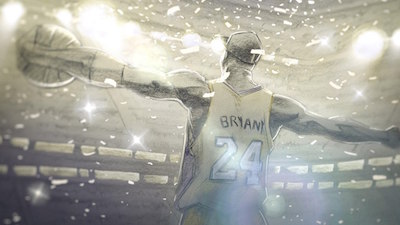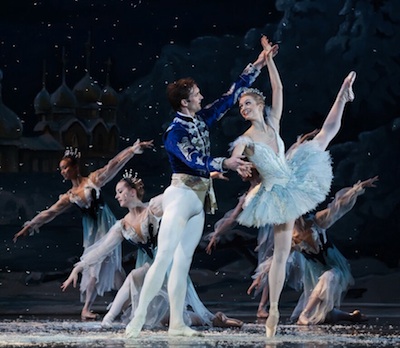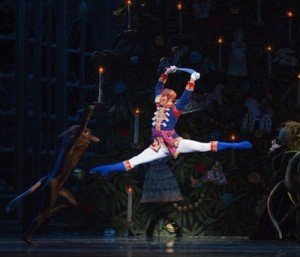 by Claudia Dafrico
by Claudia Dafrico
Contributing Writer
LOVE, CECIL (2018); Dir. Lisa Immordino Vreeland; Narrated by Rupert Everett; Zeigeist Films/Kino Lorber; Opens Friday, July 27 at the Landmark Midtown Art Cinema; Trailer here.
“Be daring. Be different. Be impractical.” Such are the words of Cecil Beaton, famed photographer, designer, all-around renaissance man, and the subject of Lisa Immordino Vreeland’s highly entertaining documentary LOVE, CECIL, opening Fri. July 27 at Landmark’s Midtown Art Cinema.
Through interviews with Beaton’s peers and admirers, narration drawn directly from personal diaries, and archive footage of the man himself, Immordino Vreeland, who also directed PEGGY GUGGENHEIM:ART ADDICT (2015; Retro Review here) crafts an intimate portrait of the visionary force that was Cecil Beaton. To document every photograph taken, every costume designed, or every diary entry written by Beaton would be a Herculean task, seeing as how his massive body of work spans from the early 1920s to the end of his life in the late 1970s, but Immordino Vreeland touches upon each era of Beaton’s work with such grace and brevity that the viewer feels as though they have accompanied Beaton on his artistic journey each step of the way.
Born in Hampstead, London in 1904, Cecil Beaton came into the world with less of a clear career goal and more of a broad artistic flair that manifested itself in every part of his life. Instead of attending classes at University and receiving what one would consider a “traditional” education, Beaton spent his days creating theater clubs, performing as a female impersonator, and photographing his friends, many of whom were a part of the London socialite group known as the “Bright Young People.” Through this circle, Cecil became enamored with the aristocrat Stephen Tennant, and thus began a long pattern of Beaton finding himself infatuated with both men and women who did not necessarily return his affections. In one of the most commendable facets of the film, Immordino does not eschew Beaton’s sexuality, but chooses to highlight it, pulling direct quotes from Beaton’s diary where he explicitly states that he is attracted to men. This is not to say that Beaton did not have feelings for women as well however, as his long lasting obsession and possible affair with Greta Garbo is discussed in the film at length.
After his years as a Bright Young Person, Cecil moved to New York and was soon hired by Vogue, where he became a noted fashion photographer. Beaton’s career highlights are too numerous to list in full, but among his most notable achievements Immordino features are the portraits of the Queen Mother, Wallis Simpson, and the rest of the royal family, his wartime photographs taken during World War II (Beaton took over 7,000), and the costume and set design for films such as GIGI (1958) and MY FAIR LADY (1964), for which he won Academy Awards for both Art Direction and Costume Design on the latter.
 No matter what the medium, Cecil was noted for being able to do more than just make something pretty; he was able to create an entire mood, and present the world as he wanted it to be seen as opposed to how it appears on the surface. His portraits of royalty, Hollywood starlets, and ordinary citizens and close friends all have a classic yet Modernist feel to them, an aesthetic that would carry over to his works on the big screen. While many artists who achieved fame in the pre-WWII era through the 1950s failed to keep up with the rapidly evolving youth culture, Beaton continued to mesh with whatever was fresh and innovative. He made art with the “Bright Young People” of this new generation, including Mick Jagger and Twiggy, and still maintained his classic sense of style and Jazz Age wit.
No matter what the medium, Cecil was noted for being able to do more than just make something pretty; he was able to create an entire mood, and present the world as he wanted it to be seen as opposed to how it appears on the surface. His portraits of royalty, Hollywood starlets, and ordinary citizens and close friends all have a classic yet Modernist feel to them, an aesthetic that would carry over to his works on the big screen. While many artists who achieved fame in the pre-WWII era through the 1950s failed to keep up with the rapidly evolving youth culture, Beaton continued to mesh with whatever was fresh and innovative. He made art with the “Bright Young People” of this new generation, including Mick Jagger and Twiggy, and still maintained his classic sense of style and Jazz Age wit.
Cecil Beaton may not be a household name to many in 2018, but as LOVE, CECIL proves, the man had a sensibility to him that remains timeless, and his art continues to inspire those who seek to eschew the traditional in favor of the unique. Be sure to catch Lisa Immordino Vreeland’s charming new film to have a chance to fall in love with Cecil.


